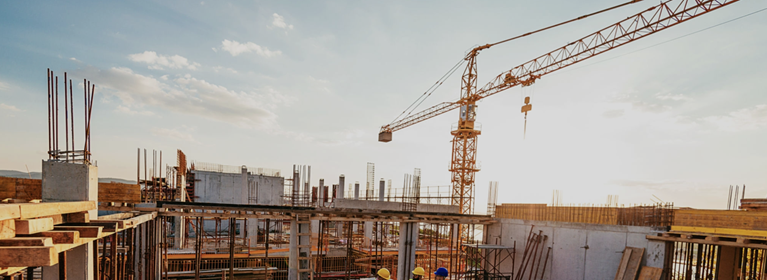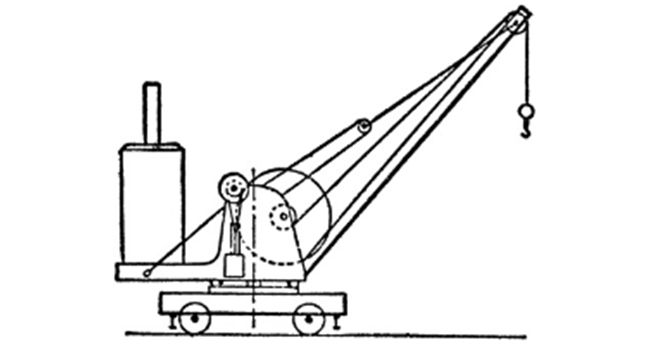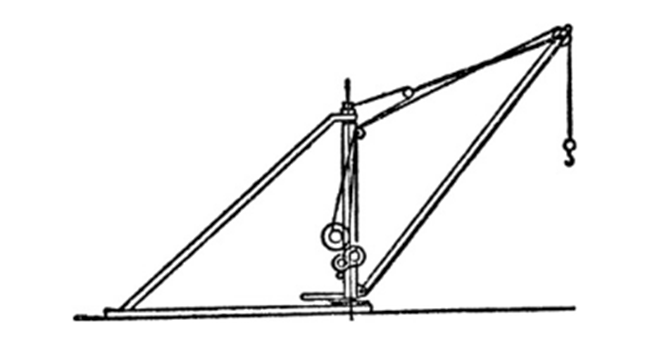Commonly found at construction sites and industrialized areas, cranes and derricks are both used for heavy lifting and transporting material. So how do you tell the difference?
First let’s look at how OSHA defines them:
OSHA 1910.179(a)(1)
A crane is a machine for lifting and lowering a load and moving it horizontally, with the hoisting mechanism an integral part of the machine. Cranes whether fixed or mobile are driven manually or by power.
OSHA 1910.181(a)(1)
A "derrick" is an apparatus consisting of a mast or equivalent member held at the head by guys or braces, with or without a boom, for use with a hoisting mechanism and operating ropes.
OSHA often refers to these two lifting machines together.
ASME has a complete standard dedicated to Derricks:
ASME B30.6 Derricks
ASME defines a “derrick” as an apparatus consisting of a mast or equivalent member held at the head by guys or braces, with or without a boom, for use with a winching mechanism and operating ropes. ASME B30.6 identifies 8 types of commonly used derricks and provides guidance on the construction, installation, operation, inspection, testing, and maintenance of these derricks.
If you look up regulations for cranes, they often include derricks, as they are both used for lifting and moving loads. Both have the capability to raise loads to a considerable height, so precautions and personnel qualifications are similar.
Cranes and derricks differ in how they are constructed and function.
Identifying Cranes
A crane is a machine used for moving materials vertically and horizontally. They use one or more simple machines to create a mechanical advantage to lift large loads. These simple machines are comprised of a hoisting mechanism and pulleys or sheaves.
Cranes can be broken into two categories: fixed and mobile. Mobile cranes can be mounted on wheels or tracks to be moved from one job site to the other. What fixed cranes lack in mobility they make up for their ability to handle heavier loads, able to transport material by adjusting the length of the boom.
Fixed cranes can be permanently or temporarily installed in a fixed location and although fixed cranes lack mobility, they are extremely useful in applications where a load only needs to be lifted and moved a limited distance horizontally, which can be accomplished by adjusting the length or angle of the boom or rotating the crane.
Lesser known to the general public, overhead bridge cranes are a type of crane that runs on a fixed track system, mounted to a runway that is either attached to the wall structure of a building or supported on its own with additional columns. Since they are on a fixed track system, they can only travel within the area of the track and bridge. This limits their movement and the height they can lift. Overhead cranes have countless indoor and outdoor applications across many industries and are often found in manufacturing plants.
Identifying Derricks
Much like a crane, a derrick is used for moving materials vertically and horizontally, comprised of a hoisting mechanism and pulleys or sheaves to create a mechanical advantage to lift large loads. Unlike a crane, a derrick usually has a vertical stationary mast extending from a base and a moveable boom. The boom is equipped with cables and pulleys/sheaves connected to the base of the mast, which can be self-supporting or stabilized with guyed wires.
Compare the two below images of a crane and derrick. You'll see the most notable difference is the vertical mast on the derrick, a quick and easy way to tell them apart from a crane.
North America - EN







